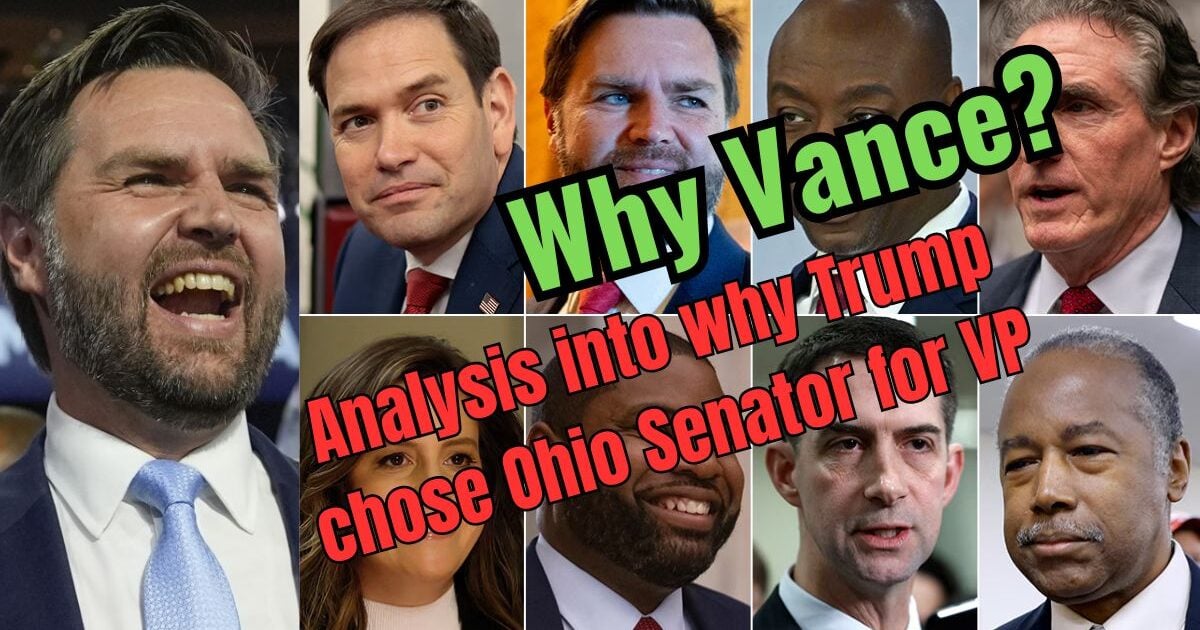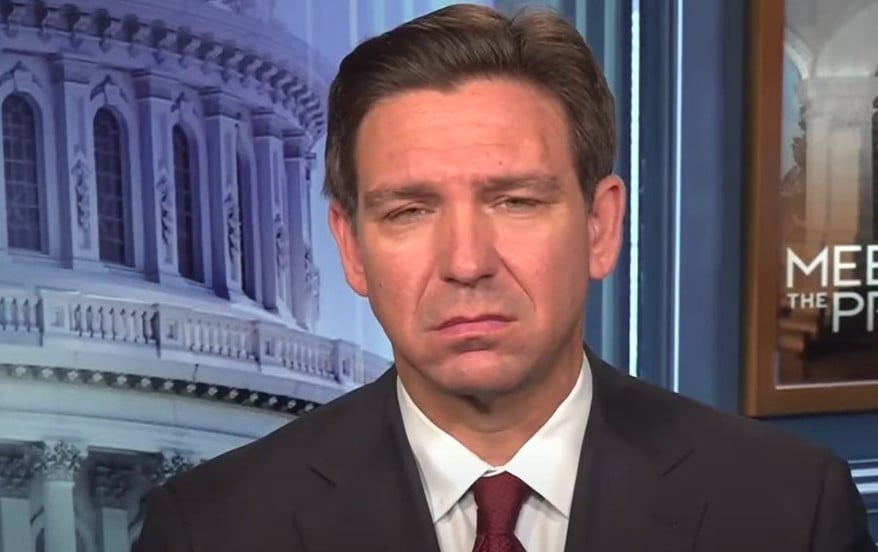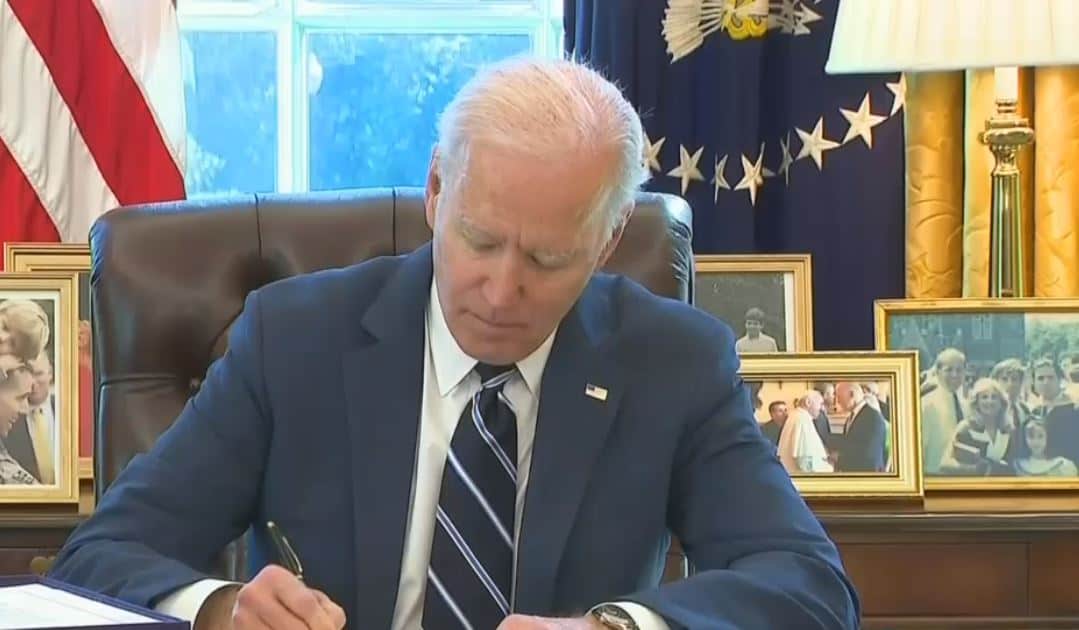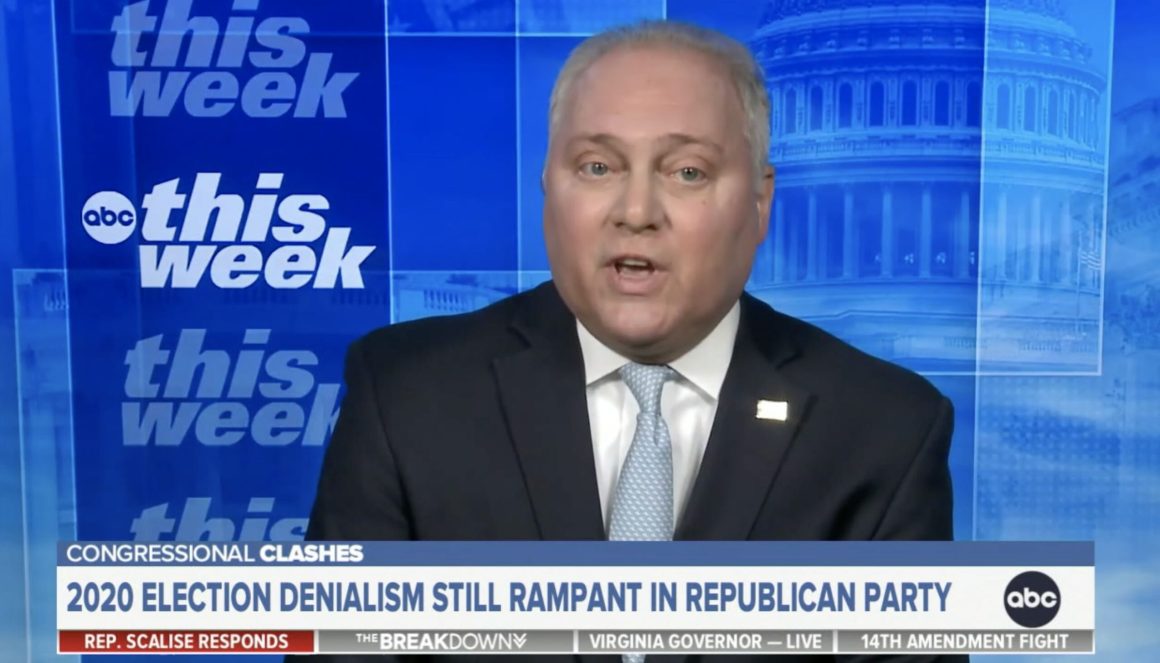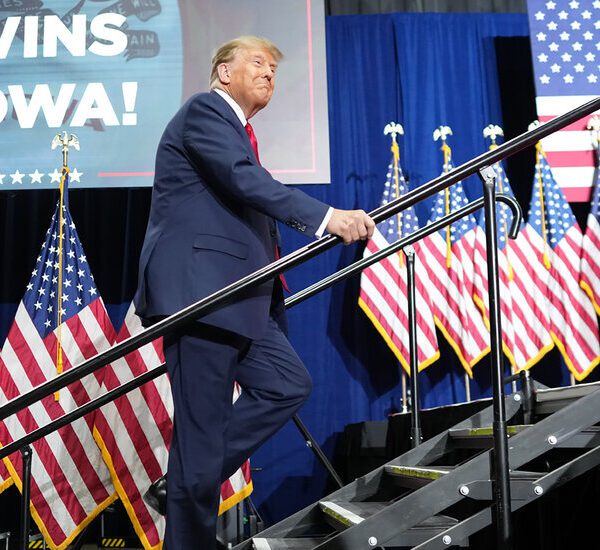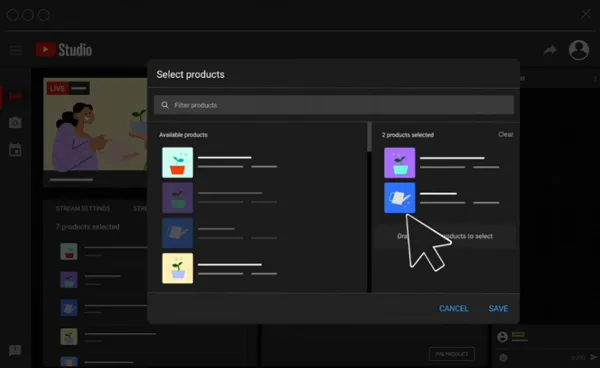
The key to any politician’s mindset is to understand that, first and foremost, they seek to stay in power. They want to get elected. If they are elected, they want to get re-elected. This is the central thesis of the political science classic, “The Electoral Connection” by David Mayhew.


Former President Richard Nixon summed this up well when he said, “Losers don’t legislate.”
For Trump to win in 2024, not only does he need to overcome the overwhelming media bias from the fakenews complex, but he is also battling various deep state forces organizing against him. Those deep state forces are willing to lie, cheat, and steal in elections in order to defeat him. The selection of Ohio Senator J.D. Vance makes a lot of sense from Trump’s electoral needs, and the deficits of the other options for Vice President become more clear.


J.D. Vance helps Trump in key states, with a key constituency, that is also key to winning national elections again for Republicans: disaffected white voters.
Trump published a list of his preferred picks as Vice President. The list included:
- Florida Senator Marco Rubio, age 53
- North Dakota Governor Doug Burghum, age 69
- Ohio Senator J.D. Vance, age 39
- South Carolina Senator Tim Scott, age 58
- New York Congresswoman Elise Stefanik, age 40
- Dr. Ben Carson, age 72
- Florida Congressman Byron Donalds, age 45
Trump has publicly said that he wanted to choose someone who could obviously take the reigns of the government and the nation in the case of a crisis. Privately, Trump has said that he did not want someone who was going to seek the limelight and overshadow Trump.
The experience and lessons learned from traitor Mike Pence seem unclear. It’s obvious now that Pence was busily undermining Trump and the Trump agenda from the start, and Pence was always, quietly, working his own separate agenda from the first Trump administration.
Yet many still expected Pence as Vice President to do the right thing when the moment came to challenge the votes and the voting process used in the stolen 2020 election. Instead, Pence chose to validate and affirm the deep state.
Pence as a 2024 Presidential candidate had been pathetic and low energy, and he dropped out after 143 days, lasting only from June 7 through October 28, 2023.
The shift in choosing Vice Presidents matches a shift in the Republican Party about how to win national elections. In 2000, George W. Bush ran as a solid conservative except on a ‘humble foreign policy’ and on school choice.
No Republican won a national election again, except for Bush’s 2004 re-election, until Trump won in 2016. Trump’s win was despite the conventional wisdom among the consultant class in Washington. Trump took a signature issue loved by the grassroots but loathed by the beltway establishment, immigration restriction, and made it a winning issue.
In doing so, Trump tapped into the base of the party. The left decried this as racism. The left wants Republicans to campaign as moderate liberals. The left tries to reduce every candidate and cause to simply their racial class or economic class.
The left assumes that simply running a black candidate means that blacks will largely vote for that person. The left assumes that running someone with a life story of poverty, will cause poor people to vote for that person.
J.D. Vance, then, by a left-wing analysis of how people vote, would appeal to younger individuals in Ohio who are white and in racially-mixed marriages.
By a left-wing analysis, the various candidates considered for Vice President were geographically useless because none were from a true battleground state that is likely to be competitive in 2024. Several of the candidates were black, which might appeal to black voters, but is not a surefire way to win the black vote due to a variety of factors.
In addition, research shows that Republicans would have to substantially win more of the black vote in order to shift election results, whereas the GOP needs to only shift a few points of the white vote in order to win many more elections.
The surprising conclusion is that unreliable white voters, who do not reliably support the Republican Party, are the greatest source of political opportunity.
This was team Trump’s great realization and mobilization in 2016 to defeat Crooked Hillary: speak to issues that matter to rust belt white Americans. This is a population that has real political problems and who are ignored by both parties.
In 2016 Trump only won 54% of the white vote, but the media makes it seem as though the parties are completely racially polarized.
The media completely confuses elected Republicans about who the Republican base really is, and where it could come from. Various data visualizations over the past decade have further illustrated that there are viable paths forward for a Trump-like candidate for Republicans nationwide, but that the era of RINO Republicans winning with Bush-family-approved low-energy messages is over.
In addition, in the electoral college, the biggest source of these disaffected whites are in the rust belt states. These disaffected whites are hated by progressives, constantly mocked and ridiculed and otherwise abused by left-wing thinkers and left-wing politicians.
To the extent they are tolerated, they are simply ATM’s for low-dollar Democratic causes and a constituency of dying unions who are continually taken for granted by Democrat politicians.
As well, the party’s endless outreach to minorities risks alienating dispossessed and demoralized whites who are constantly ridiculed and race-shamed by the media.
Feeling that the Republican Party is even abandoning at least a position of race-neutrality in favor of endless race favoritism and pandering to minorities risks pushing away whites who are simply tired of radical left-wing racial politics infecting every aspect of their lives.
Trump, a savvy businessman, clearly sees the opportunity to take the key to national elections away from Democrats by choosing someone who can uniquely relate to, and connect with, the struggles of Americans in rust belt states like Ohio, Wisconsin, Michigan, Indiana, Illinois, and Minnesota.
The main disadvantages to Senator Vance, in that he was young and had previously made anti-Trump comments, in addition to mishandling several policy issues such as vaccines and the Ukraine, were minor in comparison to the negatives for Trump’s other choices.
The other candidates offered no serious advantages, and many had serious disadvantages.
Senator Marco Rubio had been a Trump-hater in 2016, and was the originator of the weak attempt in 2016 to say Trump had “tiny hands” which was a Jeb-tier dig at Trump’s sexual prowess.
But over time, the two had warmed to one another, with Trump endorsing Rubio’s re-election in 2022. But Rubio was not especially popular among Hispanics, he was not key to any state, he was not seen as an especially prolific fundraiser. Rubio had no serious strong positives agitating in his favor as a Vice Presidential choice, and his prior betrayals of the Trump base would have been a complication.
Mega RINO Karl Rove, the architect of Republican electoral failure for the last 25 years by repeatedly screwing over the conservative base of the party, heavily pushed Doug Burgum of North Dakota.
Burgum was seen by many in the grassroots as a man made a billionaire by Microsoft and Bill Gates buying his company. His record in North Dakota was not inspiring, and his experience clearly made it seem like he was akin to Mitt Romney and felt entitled to elected office by simply paying for it.
Senator Tim Scott is a consistent conservative voice in the Senate, but he has not had a prominent opportunity to get a bigger platform. It was also notable that, at age 57, Scott was still unmarried until getting engaged for a wedding next month.
Sen. Scott has a good voting record, according to Heritage Action, but not a solidly consistent conservative one. Scott also opposed the Trump agenda on a variety of signature issues, which is hard to reconcile and hard to justify to the grassroots base of the party.
Cong. Elise Stefanik was a reliable defender of the President in his faked impeachment trials, but that is counterbalanced by her time spent with the George W. Bush White House, and also working in a senior role with cryptoRINO Paul Ryan. Stefanik was appealing for the long-tail chance that Trump could win his home state of New York, but that is practically impossible.
Dr. Ben Carson is a smart and capable manager, who did a great job running Trump’s Housing and Urban Development Office in the first term. But Dr. Carson is also aged, and while he has an inspiring personal story about becoming a neurosurgeon, isn’t seen as bringing a great deal of votes, white or black. Dr. Carson’s story is an American success story, but unfortunately it isn’t seen as an especially resonant one among black Americans.
Cong. Byron Donalds is 45 years old, and has been in Congress for three years. His past includes involvement in finance and banking. Donalds is a great emerging leader, but he’s also relatively unknown and lacks the specific credit for accomplishments, legislation, elections, or achievements, to make him more viable as a national contender. His geographical base in Florida, as well, provides no big clear benefit to the Trump campaign.
Trump was faced with a variety of good options. Some of the candidates for Vice President had other strengths and weaknesses, but none were as clearly positive and resonant with the coalition Trump needs to win America. The opportunity for these emerging leaders on the right to develop the name and notoriety needed to be contenders in the future is also obvious.

